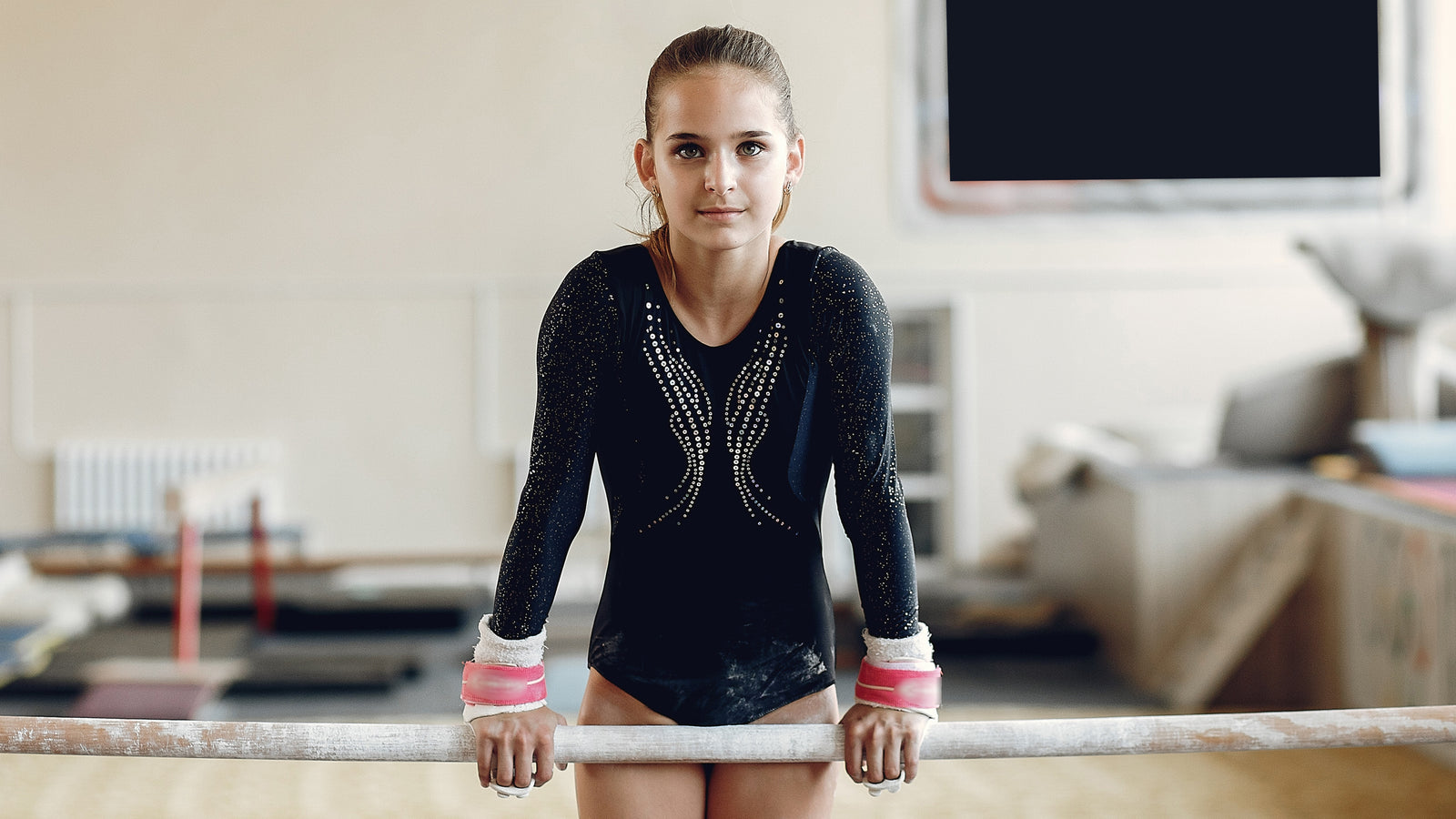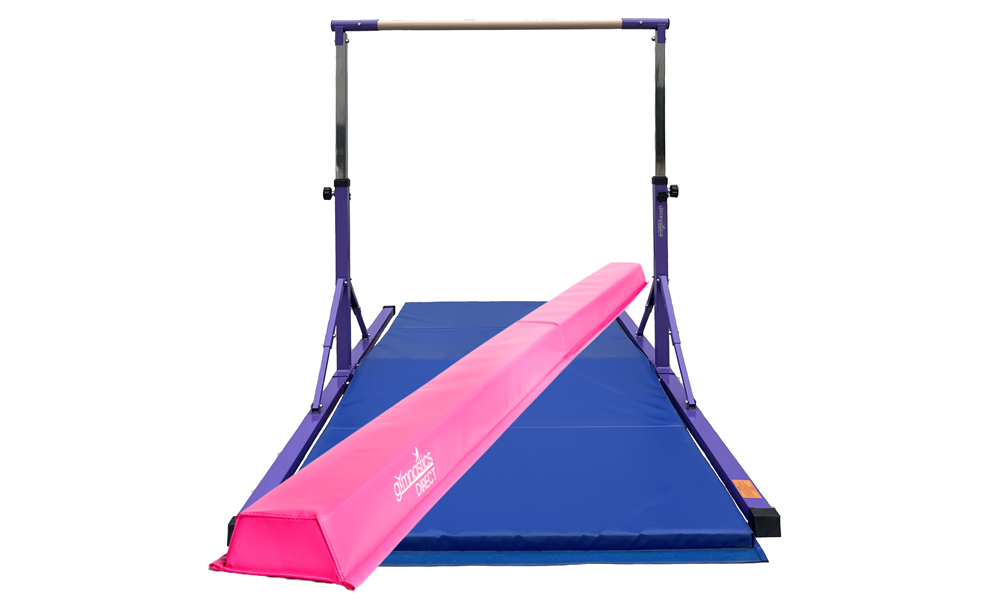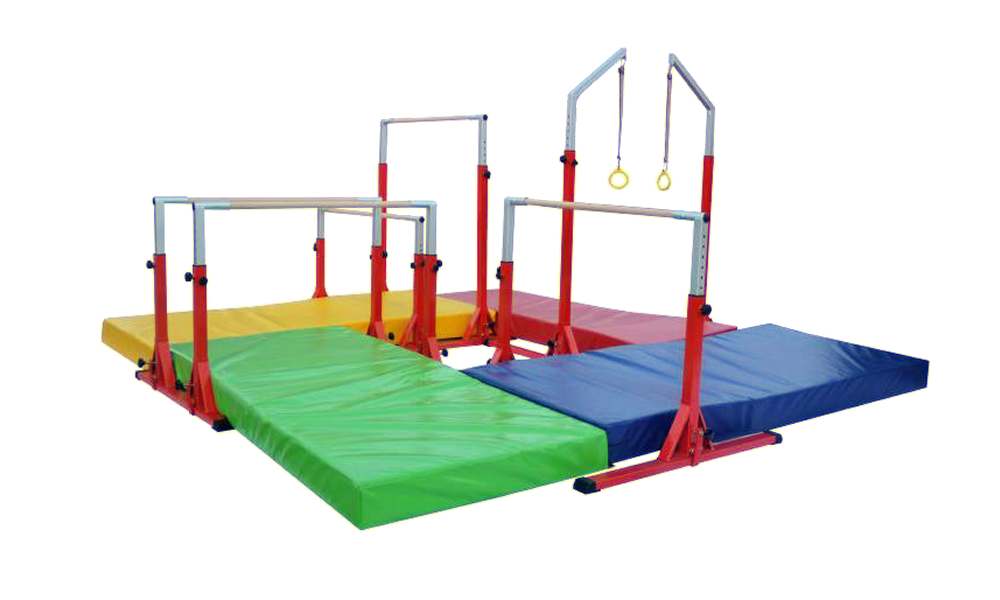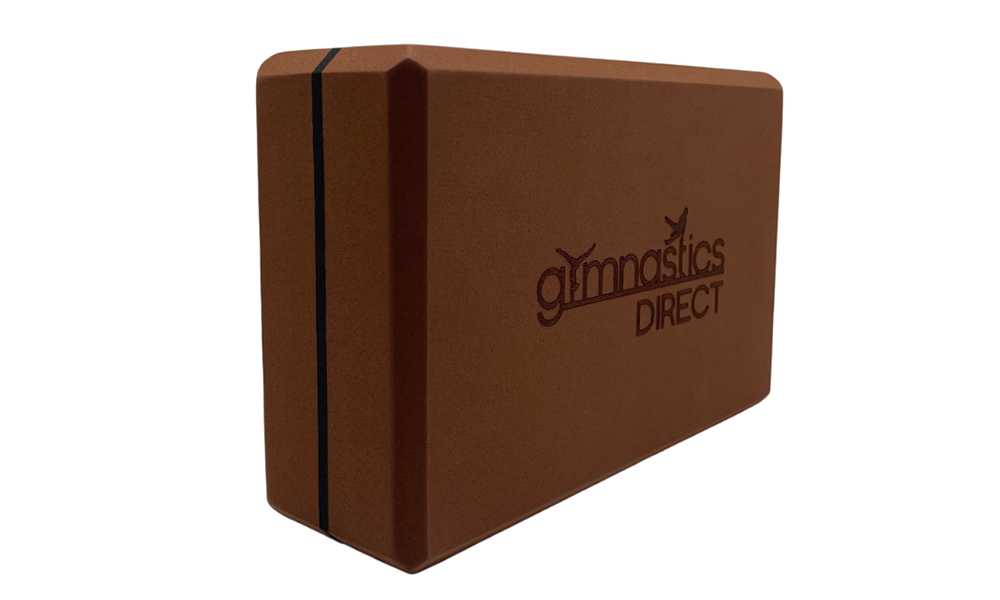Kip Variations
September 13, 2021 3 min read

A kip is a technique usually performed on the women's uneven bars and is an integral part of gymnastics. Gymnasts usually employ a kip to mount the bars smoothly and a connecting element in bar routines. It allows the gymnast to swing below the bar to arrive in a front support on the bar, and from the front support, they are able to perform any various skills. Kips requires a lot of upper body strength so it's important to do some upper body exercises to strengthen those muscles needed to perform the skill.
Kip Variations
Glide Kip: This is mainly used as a connection skill. It is performed by swinging in a piked hollow position, toes in front hanging under the bar, parallel to the floor. Once the gymnast is fully extended, they pull their feet towards the bar, whilst pushing down on the bar with straight arms. This results in the gymnast being in a front hollow hold position.
Long Hang Kip: This is where the gymnast swings on the high bar and performs a kip. Unlike the glide kip, the long hang kip does not swing into a front hollow hold position or swing the way out to the horizontal. The long hang kip movement begins with a straight hollow swing under the bar and then the kipping action is performed much earlier in the swing in comparison to the glide kip.
Drop Kip: This is used to help gymnasts when it comes to conditioning, as the movement helps with building muscle strength in gymnasts that are new to kips, or those who have kipped before wanting to improve the overall momentum. The movement starts with the gymnast in front support on the bar, thighs on the bar, chest in hollow. From here, the gymnast needs to drop back with straight arms, reenacting a "sliding" motion, where the bar slides down from their legs to their feet. After the completion of the small backwards swing, the gymnast must then do the hollow swing that will go into the kipping motion. To see the drop kip in action, click here.
The Glide Kip with Stoop Through: This movement starts off with the glide kip movement, but then the feet need to be brought between the bar and arms are to finish on top of the bar. From here, the gymnast will then use this finishing point to push off the low bar and catch the high bar. This skill can also be performed by straddling the legs over the bar as well.
Jump with 1/2 Turn to Kip and Jump 1/1 to Kip: This is a kip performed with either a half jump or full turn when "catching" the bar. When the half jump is performed, the gymnast does not swing like in other kipping variants but rather kips in the air. On the other hand, when the full turn is performed, the swing is completed before the kipping. This skill can be completed on either the low or high bar.
The key to mastering the kip is practice! Practice, practice, and practice at home. But most especially, break the entire move down into individual components. If you can master the pieces, it’s much easier to put them all together.
What new skills are you mastering? Let us know in the comments below! We've also put together some kip drills you can do at home, you can check out the blog here.
Leave a comment
Also in Tips and Tricks

Beginner Gymnastics Floor Drills
August 20, 2025 4 min read
Learn essential gymnastics floor drills for beginners. Improve cartwheels, roundoffs, and handsprings with safe, easy-to-follow progressions.

Unlock Your Potential With Gymnastics Direct Training Aids
April 19, 2024 3 min read

Maximising Your Gymnastic Equipment's Lifespan
March 08, 2024 2 min read




